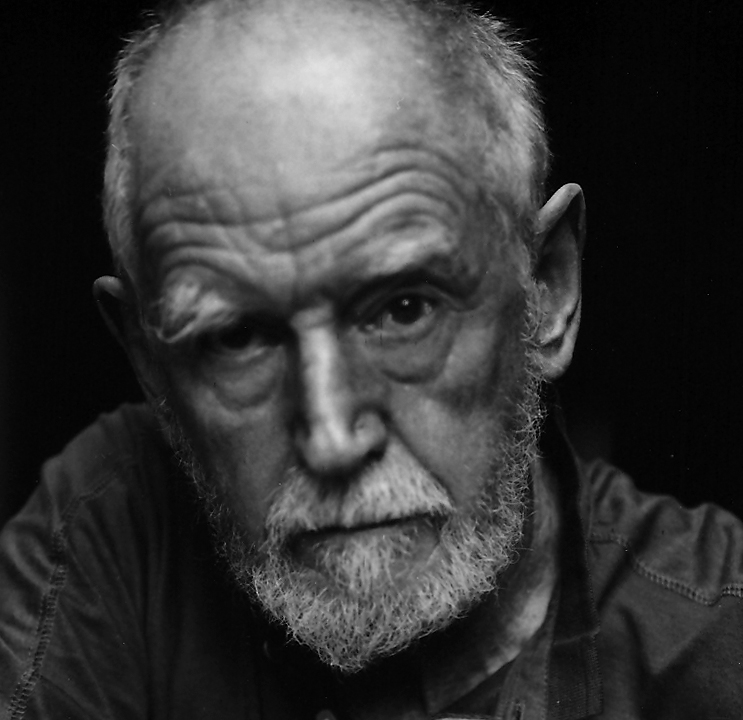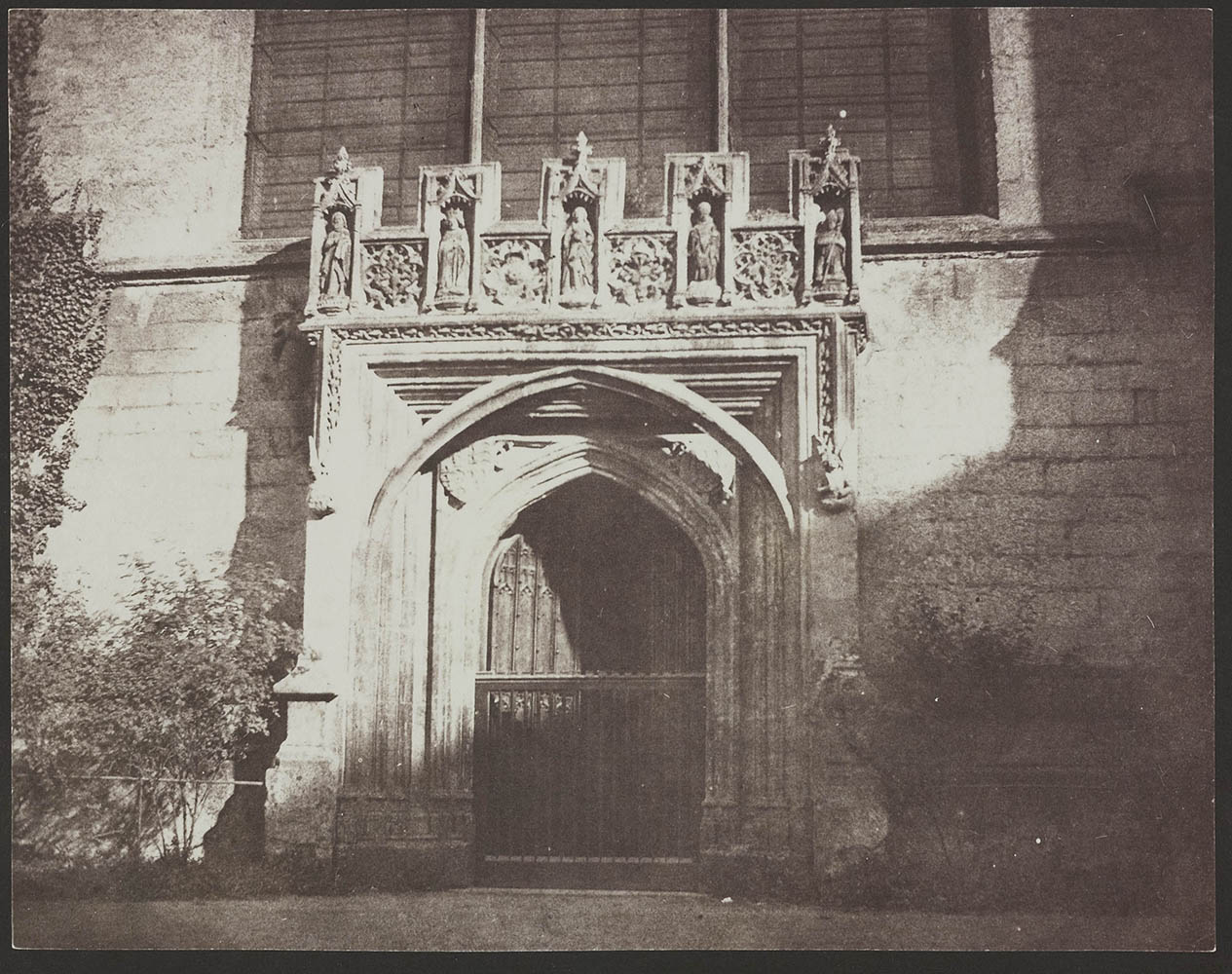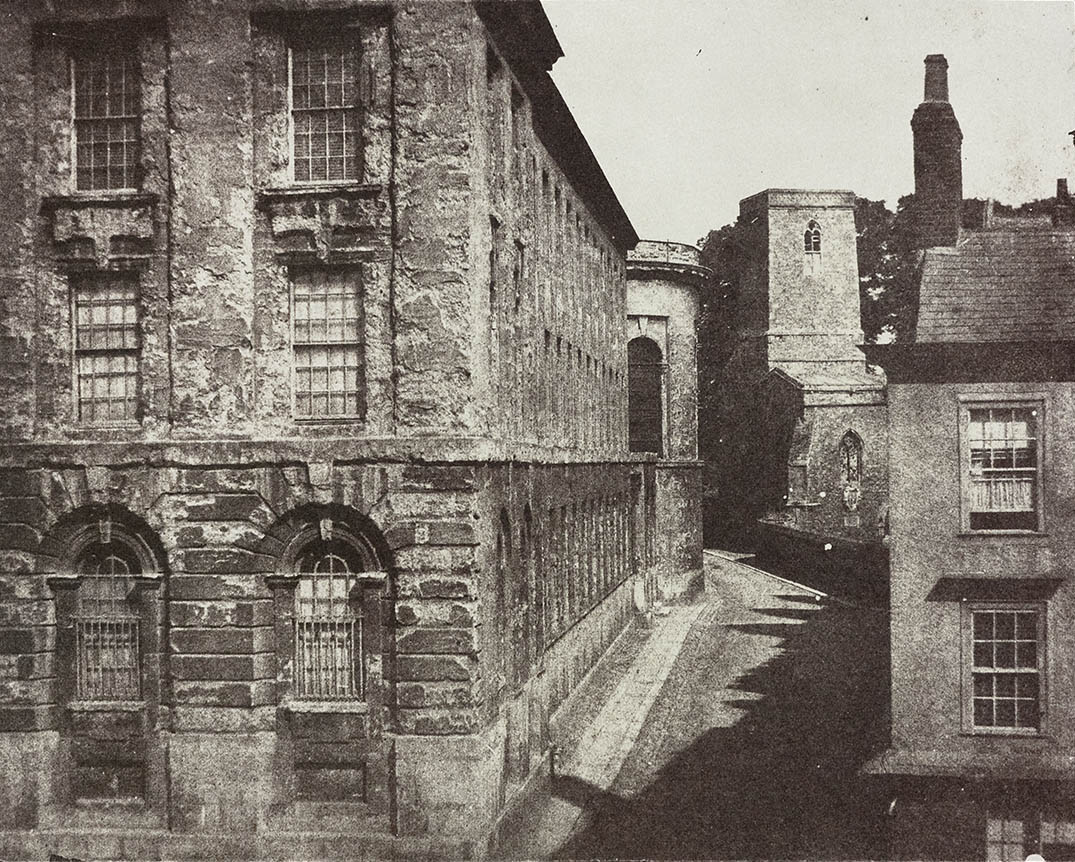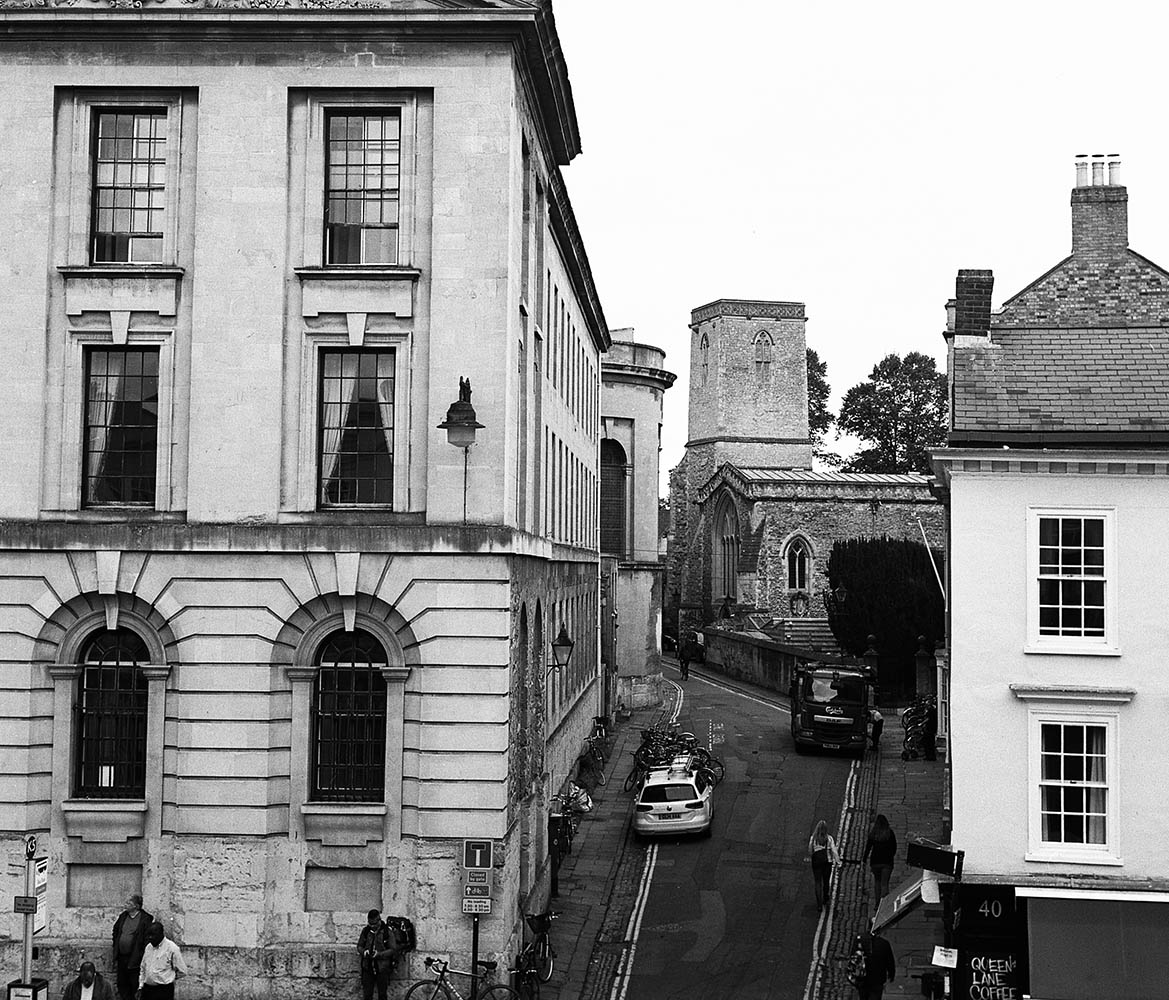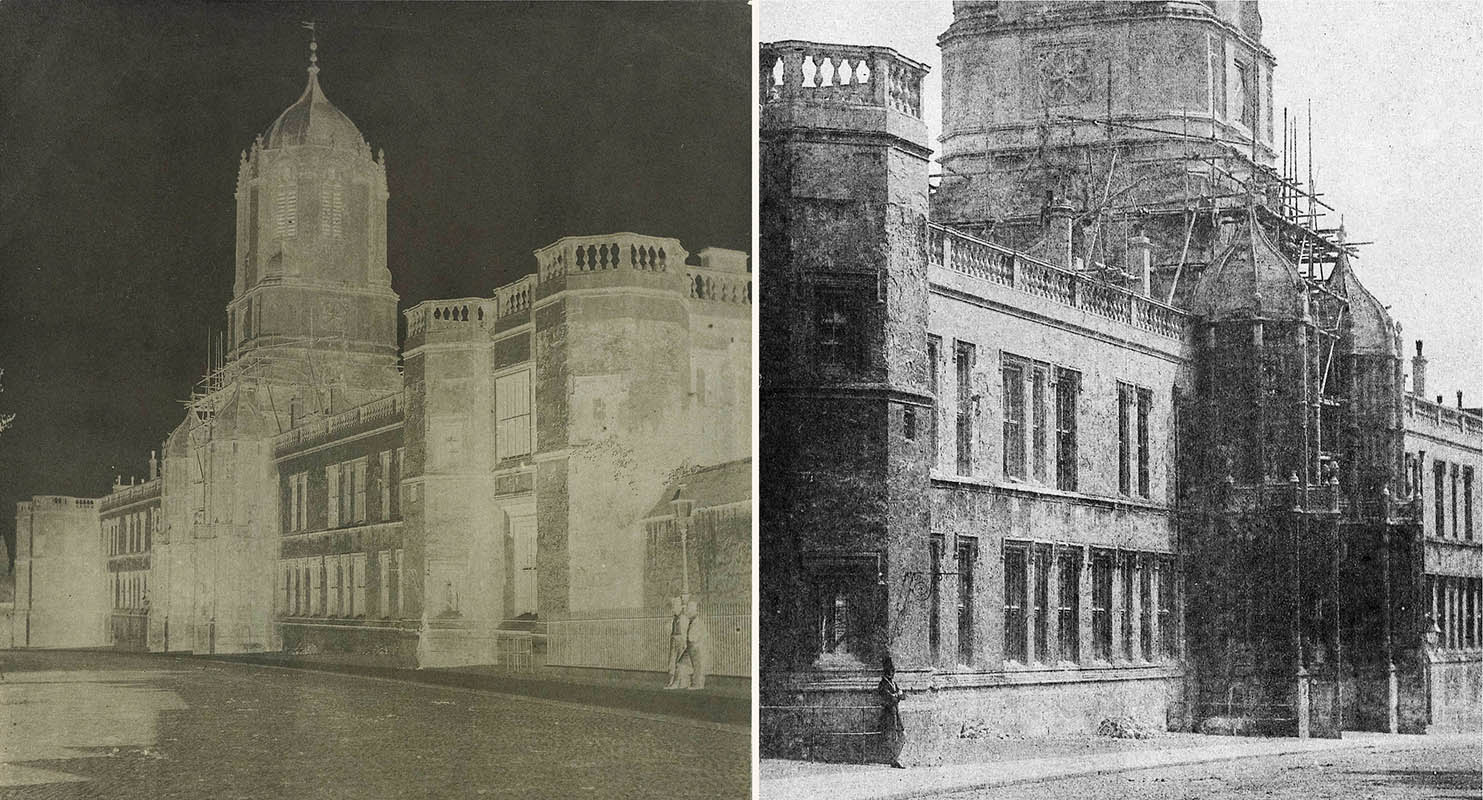
In the last couple of posts, our Research Affiliate Édouard de Saint-Ours has been wandering the streets of his native Paris, giving us new insights into the photographs that Talbot took there in 1843. However, outside of Lacock Abbey, the City of Oxford was the place that Henry Talbot photographed the most. We are fortunate to have long-time Oxford resident and another of our Research Affiliates, Simon Murison-Bowie contribute this week’s blog. Although they both sport double-barreled names, Édouard and Simon have their own distinctive approaches to analysing Henry Talbot’s work. I find both of these approaches fascinating, each in their own way.
I am wryly amused that Simon has chosen a Talbot photograph of the Tom Tower at Christ Church, a variant of the one that Talbot published in The Pencil of Nature. How different were things then! Talbot wrote, “those who have visited Oxford and Cambridge in vacation time in the summer must have been struck with the silence and tranquility which pervade these venerable abodes of learning. Those ancient courts and quadrangles and cloisters look so beautiful so tranquil and so solemn at the close of a summer’s evening, that the spectator almost thinks he gazes upon a city of former ages, deserted, but not in ruins: abandoned by man, but spared by Time. No other cities in Great Britain awake feelings at all similar. In other towns you hear at all times the busy hum of passing crowds, intent on traffic or on pleasure – but Oxford in the summer season seems the dwelling of the Genius of Repose.”
 Before Simon gets his say, however, Édouard has a few additional thoughts (he must feel the need to defend his position as having written the longest posts that we have ever published).
Before Simon gets his say, however, Édouard has a few additional thoughts (he must feel the need to defend his position as having written the longest posts that we have ever published).
As a follow-up to the first essay I have contributed to the blog, I would like to thank Serge Plantureux and Geoffrey Batchen for pointing out the existence of daguerreotype panoramas made before Talbot’s 1843 Paris experiments. These confirm that painted panoramas had an actual influence on some early photographers.
In June 1841, Achille Morelli and Lorenzo Suscipj each made their own panorama of Rome, the first from the Capitoline hill with thirteen plates, the second from San Pietro in Montorio with eight plates. These were commissions made by the English mathematician and philologist Alexander John Ellis, who was touring Italy at the time and made daguerreotypes himself. A few months later, in 1842, Antoine Claudet made a series of daguerreotype views of London from the Duke of York’s column for the Illustrated London News. The plates were copied and wood engravings made so that a 360° panorama of the city could be printed and gifted to all who subscribed to the journal for six months.
Last week we showed half of Claudet’s panorama looking North and now you can complete your collection with the Southern prospect. Considering the novelty of Claudet’s panorama and the public attention surrounding its reproduction in the ILN, there is hardly any doubt that Talbot would have seen it or at least heard about it. This would certainly have inspired him to apply the idea to the calotype. However, it must be noted that Morelli, Suscipj and Claudet’s panoramas were taken in full circle, suggesting that they intended to emulate painted panoramas. They might also have imagined that such series could actually be used as templates by panorama painters. Talbot did not take his experiments this far, and his Parisian sets only cover relatively small sections of the Boulevard. He could not have made 360° panoramas from his hotel’s windows anyway, and my guess is that he was trying to do something different, maybe envisioning that such panoramic sets could eventually be framed or placed in an album, rather than being exhibited in a circular room. Moreover, the purpose of painted panoramas was to achieve the illusion of having an actual landscape before one’s eyes. Talbot knew that salted paper prints could never match up to this for several reasons: their limited size, the lack of colour and the unavoidable separation between each print. Therefore, he might have considered it futile to try to rival painted panoramas. But this is all speculation, and I would be glad to receive suggestions from readers of the blog about this.
I would also like to take this opportunity to update some information I have used in both previous blogs regarding Talbot’s date of departure for England after his sojourn in France in 1843. I thought that Talbot had gone back to England shortly after returning from his five-day trip to Orléans, Chambord and Amboise (from 13 to around 18 June). But it appears that he actually remained in Paris until 27 June at least. In fact, the document transferring Talbot’s patent to Eugène Maret, marquis de Bassano, was only signed on 26 June. Furthermore, a letter was addressed to Talbot in Paris the next day by the lawyer Joseph Mathieu de La Grange, acknowledging his payment. It is certain that Talbot was back in England in early July, however, as attests a letter from Bassano and Amélina Petit de Billier’s brother dated 5 July and mentioning Talbot’s departure some days earlier.
Édouard de Saint-Ours
Earlier this month, Monday the 9th of April was the 175th anniversary of the purported date on which Talbot created the image of ‘An Ancient Door, Magdalen College, Oxford’.
In commenting on this image in his book, The Photographic Art of William Henry Fox Talbot, (2000: 156), Prof Schaaf draws attention to a note made by Talbot himself in which he writes ‘ye summer sun was getting low’. Larry goes on to talk interestingly about the shadow and Talbot’s own acknowledgement that it is what makes the image interesting but my interest has been in when that shadow would have been in that position. April? Summer? Is Talbot’s ‘summer sun’ an inaccurate reminisce or is the date on the negative wrong?Is this really the date on which he took this calotype? And what of the vertical format variant, the date of creation of which is given in the Catalogue Raisonné as ‘before 7 February 1846’?
And there is yet another variant, one in which Talbot was less guided by perspective, perhaps attempting to incorporate the much larger windows above the door.
Someone (probably Geoff Dyer) once said that a lifetime of taking photographs at 1/125th of a second doesn’t add up to a very long time. (With his necessarily longer exposure times, Talbot will have spent longer than most of us, if this is a valid way of measuring engagement with the process.) Notwithstanding all this, time is absolutely of the essence in photography. My engagement with the work of Talbot has brought this home to me in several distinct ways, which I will explore here. First, though, let me back up and say something about what I am up to.
I live in Oxford and have spent a lifetime taking photographs. I work with black and white film, using medium format cameras (a Rolleiflex TLR and an SL66 with 40mm, 50mm and 80mm lenses). I do not use digital cameras. My interest in Talbot is long-standing and in the 1990s my wife and I were regular visitors to Lacock. I never tire of asserting WHFT’s achievements (particularly to my French friends).
On an almost daily basis I pass views of Oxford taken by Talbot and last summer I began considering a more systematic investigation of the viewpoints used by Talbot for his images. I became aware of the Catalogue Raisonné project and contacted the Bodleian, meeting Brian Liddy soon after. He and Larry have been supportive from the word go. Oxford is second only to Lacock Abbey for the number of images attributed to Talbot so there is plenty to work on.
To be clear, though, my goal is not a ‘re-photographic project’ and I have not set out to replicate Talbot’s images, anyway impossible because we don’t know enough about technical things like the focal length of the lenses he used. Rather my aim is to study the views he took, work out the viewpoint and then to produce a photographic approximation—a kind of retrospective sharing of his experience. An early insight I gained was that Talbot frequently used an elevated viewpoint for many of his images, in part to reduce the effect of convergent perspectives. This fact alone has led to more research than any other. Finding the viewpoint in plan, so to speak, is one thing—finding the viewpoint in elevation is quite another, and very much a case of trial and error. In following in his footsteps I have found myself intrigued by when Talbot visited Oxford, where he stayed, who he knew here and how he gained access to all the places he did. I hope to elaborate on some of these issues in a subsequent blog but let me here go back to the matter of time.
Comparatively few of Talbot’s images are identified with a particular date. As already noted, one that does have a ‘created on’ date is ‘An Ancient Door’. The door in question is the west door of the chapel in Magdalen College—or more accurately the door that faces NNW (308 degrees). The porters of Magdalen have been very patient with me (accustomed as they are to the various aberrant behaviours of Oxford inhabitants, not to mention the copious visitors) as I have been observing the progress of the shadow over the last months. I was unconvinced that the elevation of the sun was going to be sufficient in early April to cast the shadow that is so important in Talbot’s picture. With a keen eye on the weather forecast I took my approximation on 5 April. Brian Liddy kindly said he would light a candle and follow the Glaswegian tradition of burning sausages as an offering to the weather gods but as I write this on a miserable Monday I am glad I took other precautions. In my photograph, taken at 4.30 pm on 5 April, the angle of the shadow shows that the sun is at an elevation slightly higher than it is in Talbot’s ‘Ancient Door’, but it is sufficiently close to corroborate the attributed date of Talbot’s. Perhaps the angle would have been better half an hour later but, as luck would have it, after 4.30pm the sun became hazy and would not have produced a convincing image. Any deviation in the shape of the shadow is probably caused by changes in the buildings casting the shadow—I am still waiting for information about this from the Magdalen archivists.
If this date is good for one, is it good for all three variants? Did Nicolaas Henneman, who was with Talbot on many of the Oxford trips, take any of these? The shadow may prove the date and the time, but that may be the limit of its storytelling.
This kind of internal evidence—evidence within the photograph itself—as an indicator of time is here being used to corroborate attributed dates and identify the time of day an image was taken. There are other Talbot photographs of Oxford where this is the case. For example, the opening plate in The Pencil of Nature, ‘Part of Queen’s College, Oxford’, with its shadow stretching diagonally across Queen’s Lane is given a creation date of 4 September 1843.
Sadly, by the time I had negotiated access to the room in University College leading onto the balcony above the Grand Café (all that is left of the Angel Inn), it was already 20 September, and no sun. I’ll have another go this year but it points up a difficulty I face all the time: getting people in authority to grant access when the conditions are right—often a last minute thing.
That said, I have met with friendly understanding and help of many kinds when I have explained what I am doing and found myself in some surprising and privileged places.
My final example of time being of the essence is the case of ‘St Aldate’s, Tom Tower, Christ Church, Oxford’.
In Talbot’s photograph there is scaffolding around Tom Tower, something that intrigued Judith Curthoys, Archivist forChrist Church, when I showed her the Talbot negative. The hope was that the existence of the scaffolding would help establish a date for the photograph. Christ Church records show that the Treasurer was requested on 19 August 1840 to estimate the cost of repairs to the Great Quadrangle and Tom Tower as recorded in the college’s Chapter Book (D&C i.b.10, f.29) and a letter from 1845 in the estates correspondence (MS Estates 144, f.215) mentions the existence of scaffolding on Tom Tower in the winter of 1840/1841. Judith Curthoys tells me ‘I have had a look through the disbursement books for the period, but these are rather thin on detail and don’t specify either jobs or contractors’. Frustratingly nothing matches up with what I have established about Talbot’s visits to Oxford. There is a letter from Mary Thereza Talbot to Henry dated 28 October 1840 in which she refers to Henry’s visit to Oxford ‘in the summer’ but more explicit evidence is provided by a letter from his wife Constance in which she says ‘You have a lovely sun today for Oxford’. This letter is dated 29 July 1840, as is a note from Henry sent from the Angel Hotel to William Buckland, the famous palaeontologist and Fellow of Christ Church which reads ‘Mr Fox Talbot will do himself the pleasure of calling on Dr Buckland …’. (That this note is in the Talbot archive suggests perhaps that it was not in fact sent though there is plenty of evidence that the two men knew each other. So we know Talbot was in Oxford in July of 1840; we know there was scaffolding around Tom Tower in the winter of that year; we know that a Talbot photograph of the scaffolding exists and that that photograph looks as if it was taken in the summer (the light on the tower, the dress of the men in the photograph, possibly some leaves on the tree to the left). Judith Curthoys has speculated that the scaffolding might have been erected to enable the Treasurer’s estimate to be made, but he was not instructed to do this until 19 August. Did Talbot make another visit later that summer or in the winter? The ‘internal evidence’ of the scaffolding seems to promise much but we have failed to make it deliver on that promise.
Obviously this is work in progress and it is my intention to report further on what the search for Talbot’s viewpoints and the making of approximations to his images can tell us about when he was here, when he took what, who he might have known and how he went about photographing in the city.
A potentially easier future target will be catching the shadow in Talbot’s New College Lane, mercifully taken from street level. But where has Talbot’s tranquility gone?
• Questions or Comments? • Please contact digitalsupport@bodleian.ox.ac.uk, Édouard de Saint-Ours has kindly made available his background notes for his blogs as a downloadable pdf. • WHFT, text for Plate XVIII, the “Gate of Christchurch,” The Pencil of Nature (London: Longman, Brown, Green, & Longmans), part four, June 1845. • For more about Claudet’s panorama, Édouard recommends Geoffrey Batchen’s chapter in Thierry Gervais’s The “Public” Life of Photographs (Cambridge, MA: MIT Press, 2016): “Double Displacement: Photography and Dissemination”, pp. 56-61. • Wood engravings based on Antoine Claudet’s daguerreotypes, London in 1842, Taken from the Summit of the Duke of York’s Column (south view), Illustrated London News, 30 July 1842, courtesy of Getty Research Institute, Los Angeles. • Nancy Keeler, “Inventors and Entrepreneurs,” History of Photography, v. 26, no. 1, Spring 2002, pp. 27. • WHFT, An Ancient Door, Magdalen College, Oxford, salted paper print from a calotype negtive, National Science and Media Museum, Bradford, 1937-1726-1; Schaaf 44. • Larry J Schaaf, The Photographic Art of William Henry Fox Talbot (Princeton: Princeton University Press, 2000), p. 156. • WHFT, An Ancient Door, Magdalen College, Oxford, salted paper print from a calotype negtive, NSMeM, 1937-1710-3; Schaaf 46. • WHFT, An Ancient Door, Magdalen College, Oxford, salted paper print from a calotype negtive, NSMeM, 1937-1707-1; Schaaf 45. • WHFT, Part of Queen’s College, Oxford, salted paper print from a calotype negative, NSMeM, 1937-1296/3; Schaaf 1461. • WHFT, New College Lane, Oxford, salted paper print from a calotype negative, NSMeM, 1937-1296/3; Schaaf 1709.

